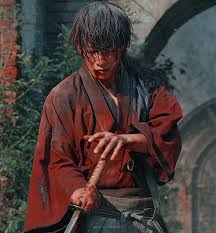“If you wish to control others you must first control yourself”
- Miyamoto Musashi
https://thesapienshop.com/products/the-samurai-warrior
200 copies, public NFT
History of the Samurai:
History
The history of the samurai traces back to feudal Japan, particularly during the Heian period (794-1185). The term “samurai” originally referred to the guards and warriors who served the noble class or the imperial family. Over time, their role evolved into a distinct social class with its own code of ethics, lifestyle, and martial traditions.
Here’s a brief overview of the history of the samurai:
Heian Period (794-1185): During the Heian period, Japan’s imperial court was the center of power. Samurai at this time were essentially guards or warriors who served provincial lords or the imperial family. They were skilled in martial arts and horseback riding, and they often fought to protect their masters’ interests.
Kamakura Period (1185-1333): The Kamakura period marked a significant shift in Japanese history, as political power moved from the imperial court to the military. Minamoto no Yoritomo, a warrior from the Minamoto clan, established the Kamakura Shogunate in 1185, effectively becoming Japan’s first shogun. Samurai during this period served regional lords known as daimyo, who pledged loyalty to the shogun. The samurai code of ethics, Bushido, began to take shape during this era.
Muromachi Period (1336-1573): The Muromachi period was characterized by the Ashikaga Shogunate, which succeeded the Kamakura Shogunate. This period saw internal conflict among various samurai clans and daimyo, resulting in the Ōnin War (1467-1477) and the subsequent Sengoku period, known as the Warring States period. During this time, samurai warfare became highly decentralized, with individual clans vying for power.
Azuchi-Momoyama Period (1573-1603): The Azuchi-Momoyama period marked the end of the Sengoku period and the unification of Japan under the leadership of Oda Nobunaga, Toyotomi Hideyoshi, and eventually Tokugawa Ieyasu. These figures, known as the “Three Unifiers,” employed samurai armies to consolidate power and bring an end to the era of civil war.
Edo Period (1603-1868): The Edo period began with Tokugawa Ieyasu establishing the Tokugawa Shogunate in 1603, which lasted until 1868. During this time, the samurai class reached its zenith in terms of social status and cultural influence, although their role in warfare declined due to the relative peace and stability of the period. Samurai were required to live according to strict codes of conduct and were granted stipends by their daimyo lords in exchange for their service.
Meiji Restoration and Modernization (1868-present): The Meiji Restoration in 1868 marked the end of the feudal era and the beginning of Japan’s modernization. The samurai class was officially abolished, and the government implemented
widespread reforms to centralize power and modernize the military. Many former samurai adapted to the changing times, pursuing careers in government, business, and education.
Despite the end of the samurai as a distinct social class, their legacy continues to resonate in Japanese culture, martial arts, literature, and film. The samurai code of Bushido, emphasizing loyalty, honor, and self-discipline, remains an enduring symbol of Japan’s warrior tradition.
Qualities of a Samurai
Qualities of a Samurai
Loyalty:
Samurai were expected to be fiercely loyal to their lord and to follow their orders without question.
Honor:
Honor was of utmost importance to samurai. They adhered to a strict code of conduct known as bushido, which emphasized honesty, integrity, and moral courage.
Courage:
Samurai were expected to display bravery and fearlessness in the face of danger, whether in battle or in personal challenges.
Discipline:
They practiced rigorous self-discipline, both in their training and in their daily lives, to cultivate strength of character and willpower.
Skill in Combat:
Samurai were highly trained in various martial arts and combat techniques, mastering weapons such as swords, bows, and spears.
Respect:
Respect for authority, elders, and fellow samurai was essential. They valued humility and treated others with dignity and courtesy.
Self-sacrifice:
Samurai were willing to sacrifice their own lives for the greater good, whether in service to their lord or in defense of their honor.
Adaptability:
Samurai were adaptable and versatile, capable of navigating different situations and environments with grace and composure.
NFT Details:
1. Bushido (The Way of the Warrior):
a. Loyalty:
i. Devotion to one’s lord and master.
ii. Willingness to sacrifice personal interests for the greater good.
iii. Unwavering commitment to fulfilling obligations.
b. Courage:
i. Fearlessness in the face of danger.
ii. Willingness to confront adversity with resolve.
iii. Calmness and composure under pressure.
c. Honor:
i. Adherence to a strict code of conduct.
ii. Integrity in all dealings and interactions.
iii. Respect for oneself and others.
2. Martial Prowess:
a. Skill in Combat:
i. Mastery of various martial arts and weapons.
ii. Ability to adapt fighting style to different situations.
iii. Quick reflexes and acute awareness in battle.
b. Discipline:
i. Rigorous training regimen to hone physical and mental abilities.
ii. Self-control and restraint in all actions.
iii. Commitment to continuous self-improvement.
c. Strategy:
i. Tactical acumen in planning and executing battles.
ii. Ability to assess and exploit opponents’ weaknesses.
iii. Understanding of battlefield terrain and conditions.
3. Ethical Conduct:
a. Respect:
i. Reverence for authority, elders, and traditions.
ii. Consideration for the well-being of others.
iii. Empathy and compassion towards those in need.
b. Humility:
i. Recognition of one’s limitations and imperfections.
ii. Willingness to learn from others and accept criticism.
iii. Modesty in victory and graciousness in defeat.
c. Self-Improvement:
i. Dedication to intellectual and spiritual growth.
ii. Pursuit of wisdom through study and reflection.
iii. Willingness to confront and overcome personal flaws and weaknesses.
“True strength is the flower of Wisdom, but its seed is action”
- Anonymous



